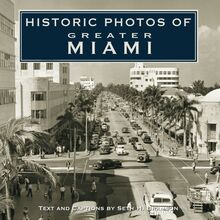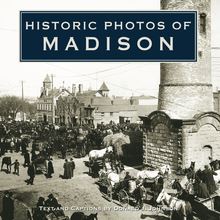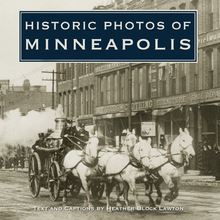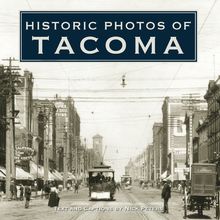Historic Photos of Charlotte , livre ebook
94
pages
English
Ebooks
2006
Vous pourrez modifier la taille du texte de cet ouvrage
Obtenez un accès à la bibliothèque pour le consulter en ligne En savoir plus
Découvre YouScribe en t'inscrivant gratuitement
Découvre YouScribe en t'inscrivant gratuitement
94
pages
English
Ebooks
2006
Vous pourrez modifier la taille du texte de cet ouvrage
Obtenez un accès à la bibliothèque pour le consulter en ligne En savoir plus
Publié par
Date de parution
01 décembre 2006
Nombre de lectures
3
EAN13
9781618586087
Langue
English
Poids de l'ouvrage
5 Mo
Publié par
Date de parution
01 décembre 2006
Nombre de lectures
3
EAN13
9781618586087
Langue
English
Poids de l'ouvrage
5 Mo
HISTORIC PHOTOS OF
CHARLOTTE
T EXT AND C APTIONS BY R YAN L. S UMNER
Looking across Charlotte s cityscape.
HISTORIC PHOTOS OF
CHARLOTTE
Turner Publishing Company
200 4th Avenue North Suite 950
Nashville, Tennessee 37219
(615) 255-2665
www.turnerpublishing.com
Historic Photos of Charlotte
Copyright 2006 Turner Publishing Company
All rights reserved.
This book or any part thereof may not be reproduced or transmitted in any form or by any means, electronic or mechanical, including photocopying, recording, or by any information storage and retrieval system, without permission in writing from the publisher.
Library of Congress Control Number: 2006933649
ISBN-10: 1-59652-282-8
ISBN-13: 978-1-59652-282-4
Printed in China
09 10 11 12 13 14 15 16 17-0 9 8 7 6 5 4 3 2
C ONTENTS
A CKNOWLEDGMENTS
P REFACE
T HE B IRTH OF A T EXTILE T YCOON
B IG B USINESS T AKES THE S TAGE
W ATCH C HARLOTTE G ROW
S TRENGTH AND R ESOLVE
N OTES ON THE P HOTOGRAPHS
Cedric Cornbread Maxwell led the University of North Carolina at Charlotte 49ers to victory in the NIT tournament in 1976 and to the NCAA Final Four in 1977. Maxwell was picked number 12 in the 77 NBA draft by the Boston Celtics, for whom he played for 8 of his 11 years as a professional.
A CKNOWLEDGMENTS
This volume, Historic Photos of Charlotte , is the result of the cooperation and efforts of many individuals, organizations, institutions, and corporations. It is with great thanks that we acknowledge the valuable contribution of the following for their generous support:
Mary Boyer
Carolinas Aviation Commission
Duke Energy
Federal Reserve
J. Murrey Atkins Library
Levine Museum of the New South
North Carolina State Archives
Public Library of Charlotte in Mecklenburg
University of North Carolina at Charlotte Archives
We would also like to thank Robin Brabham and Shelia Bumgarner for valuable contributions and assistance in making this work possible.
P REFACE
Charlotte has thousands of historic photographs that reside in archives, both locally and nationally. This book began with the observation that, while those photographs are of great interest to many, they are not easily accessible. During a time when Charlotte is looking ahead and evaluating its future course, many people are asking, How do we treat the past? These decisions affect every aspect of the city-architecture, public spaces, commerce, infrastructure-and these, in turn, affect the way that people live their lives. This book seeks to provide easy access to a valuable, objective look into the history of Charlotte.
The power of photographs is that they are less subjective than words in their treatment of history. Although the photographer can make decisions regarding subject matter and how to capture and present it, photographs do not provide the breadth of interpretation that text does. For this reason, they offer an original, untainted perspective that allows the viewer to interpret and observe.
This project represents countless hours of review and research. The researchers and writer have reviewed thousands of photographs in numerous archives. We greatly appreciate the generous assistance of the individuals and organizations listed in the acknowledgments of this work, without whom this project could not have been completed.
The goal in publishing this work is to provide broader access to this set of extraordinary photographs that seek to inspire, provide perspective, and evoke insight that might assist people who are responsible for determining Charlotte s future. In addition, the book seeks to preserve the past with adequate respect and reverence.
With the exception of touching up imperfections that have accrued with the passage of time and cropping where necessary, no other changes have been made. The focus and clarity of many images is limited to the technology and the ability of the photographer at the time they were taken.
The work is divided generally into eras. Beginning with some of the earliest known photographs of Charlotte, the first section records photographs through the end of the nineteenth century. The second section spans the beginning of the twentieth century through the 1920s. Section Three moves from the 1920s to the 1950s. The last section covers recent times.
In each of these sections we have made an effort to capture various aspects of life through our selection of photographs. People, commerce, transportation, infrastructure, religious institutions, and educational institutions have been included to provide a broad perspective.
We encourage readers to reflect as they go walking in Charlotte, strolling through the city, its parks, and its neighborhoods. It is the publisher s hope that in utilizing this work, longtime residents will learn something new and that new residents will gain a perspective on where Charlotte has been, so that each can contribute to its future.
-Todd Bottorff, Publisher
A trolley plies the route in downtown Charlotte.
T HE B IRTH OF A T EXTILE T YCOON
Charlotte is the quintessential New South city and has always been a place obsessed with growth, change, and reinvention-moving from field, to factory, to finance.
Named in honor of British king George III s wife, Charlotte was a place of little importance before the American Civil War. Rocky rivers made it hard to get crops to market, so plantations stayed small compared with the Deep South. In the early 1860s, only one Mecklenburg family owned 50 slaves; however, nearly a quarter of Mecklenburg residents were slaveholders, with more than 800 households owning between 1 and 20 persons in forced servitude. The railroads had just come to Charlotte and other backcountry towns in the decade before America divided itself into two nations locked in a death grip with each other.
With the coastal plantations destroyed, this region came into its own. Cotton farmers brought their crops to Charlotte and other towns that sprang up along the rail line. Area leaders began to reenvision their land of cotton farms as a land of cotton manufacturing. Charlotte became the hub of this new textile-mill economy.
Other industries and businesses followed, and Charlotte began to grow at a meteoric rate, quickly becoming the Capital of the Carolinas. People came from all around to shop at downtown department stores. Henry Ford s automobiles-made on Statesville Avenue-emancipated workers from their farms and mill villages. Radio broadcasts from Charlotte s WBT-one of the country s first radio stations-connected the region to the wider world and let Southerners share their culture, mostly through music, with the nation at large. James Duke dammed the Catawba River to build power plants, which supplied the region with electricity and Charlotteans with the power to prosper.
The greatest changes were still to come. The South had long been the country s poorest region, and Charlotte was hard hit by the stock market crash of 1929 and subsequent Great Depression. Federal investment through Roosevelt s New Deal created new infrastructure and modernization, which along with the civil rights movement of the 1960s, let the South join the rest of the nation in the modern era. By the 1970s and 1980s, Charlotte began to emerge as a banking center and is today the second-largest financial center in the United States-trailing only New York City.
Once little more than a courthouse village, the Queen City is today a powerful economic magnet boasting numerous Fortune 500 companies and professional sports teams, and drawing newcomers from all over the nation and globe.
Looking east on Trade Street (ca. 1890). R. M. White s wholesale and retail grocery is visible in the background.
Hezekiah Alexander was a prominent farmer and one of Mecklenburg County s foremost patriots during the Revolution. Alexander held several offices in the Revolutionary government and is said to have been one of the signers of the Mecklenburg Declaration of Independence. Alexander s house, built in 1774, still stands off Shamrock Road and is cared for by the Charlotte Museum of History.
South Tryon Street (ca. 1890).
A doctor s daughter raised just north of Charlotte near Cornelius, Annie Alexander studied medicine in Philadelphia and New York. The only woman among the 100 physicians certified by the Maryland Board of Medical Examiners in 1885, she received the highest scores. The first woman licensed to practice medicine in the South, Dr. Alexander opened her office in Charlotte two years later. At first people scoffed, and she earned just $2 her first year. She persevered and quickly gained acclaim, serving at both Presbyterian and Saint Peter s hospitals, as physician for Presbyterian College, and at Camp Greene as acting assistant surgeon. Later Dr. Alexander won election to the presidency of the Mecklenburg Medical Association.
Established in 1883, the Brown and Weddington Hardware store stood on Trade Street, between College and Tryon streets.
First Presbyterian Church.
Established in 1834, Saint Peter s is the oldest Episcopal Church in Charlotte. The current sanctuary, located at the corner of Tryon and Seventh streets, was erected in 1892.
Railroad connections transformed Charlotte from just another backcountry town to a city of regional importance. In 1852, local merchants and planters built the very first railroad into the Carolina piedmont: the Charlotte and South Carolina Railroad. Rail lines continued to grow, and in 1884 several small companies joined together to form the Southern Railway-connecting Washington, D.C., to New Orleans, with Charlotte poised right in the center. Pictured is the Charlotte railroad yard (ca. 1895).














